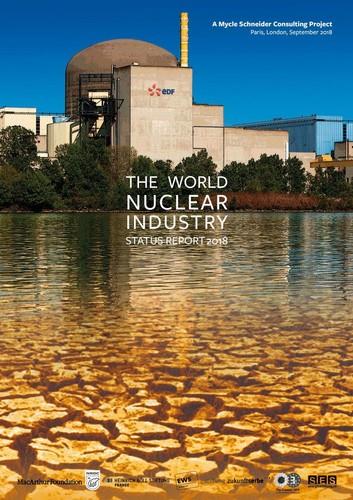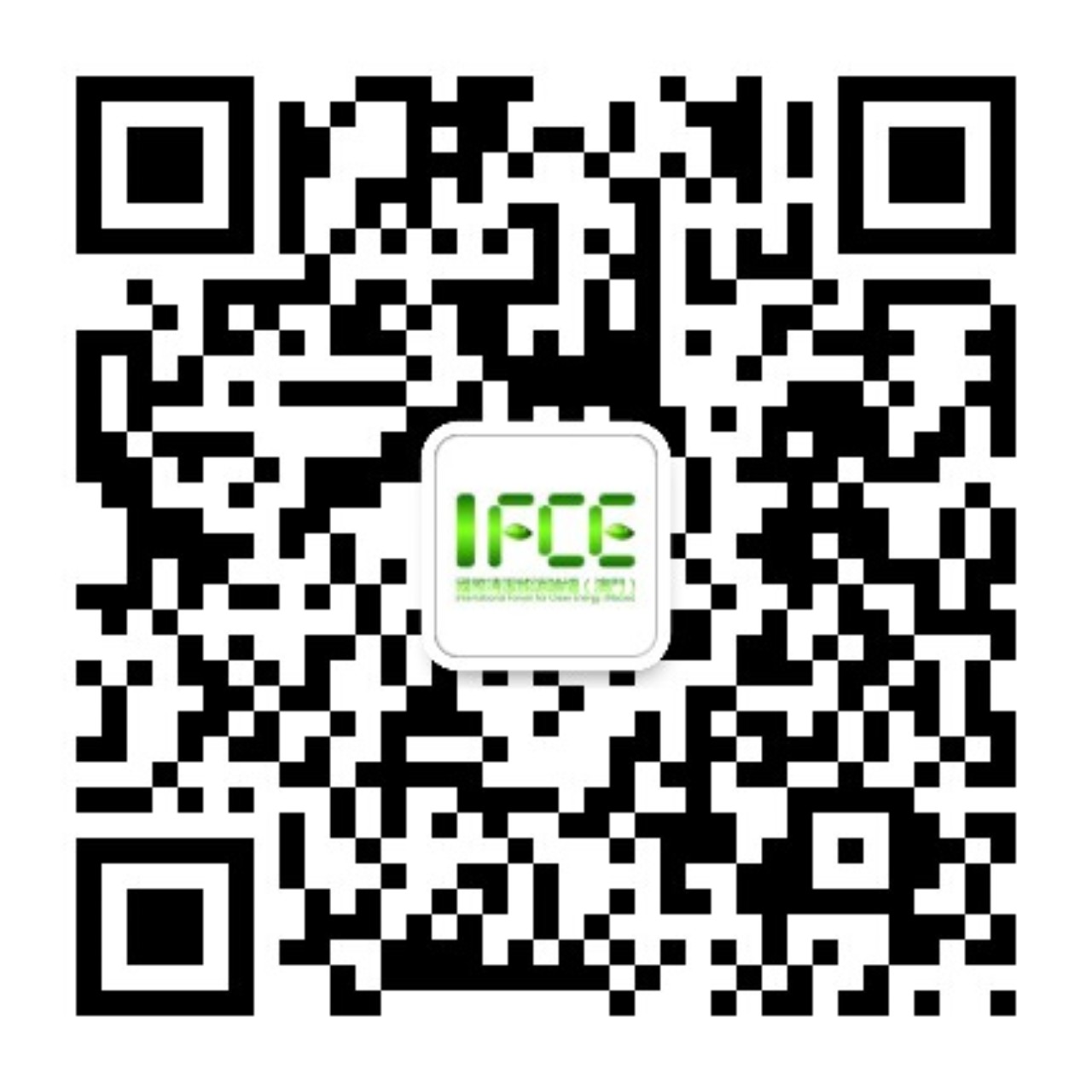韓文科與周傑為《2018世界核能產業現狀報告》作序
2019年01月13日 13:16 | 来源:人民政协网
中英文序言全文如下:
Foreword: A View from China
by HAN Wenke and ZHOU Jie
The development of the world’s nuclear industry currently faces economic, environmental, and safety concerns. A stream of problems must be dealt with, including, among others, the sourcing of funds; the attainability of uranium resources; the processing of nuclear waste; the safety issues within nuclear technology; public opinion and social acceptability; the aging of nuclear facilities and professional staff; the difficulty of ensuring nuclear non-proliferation; and of course competition from renewable energy sources. Past nuclear disasters at Three Mile Island-2 in the United States, Chernobyl in the Soviet Union, and Fukushima in Japan have all undoubtedly contributed to strong currents of anti-nuclear sentiment throughout the world. Caught in between the strong and often vocal conflicts of the pro- and anti-nuclear factions, a confused public may easily lose sight of the truth. The question of how to overcome this binary opposition, and rationalise the discourse concerning the nuclear industry, is no less than a test of human intellect.
The World Nuclear Industry Status Report (WNISR), chiefly edited by Mycle Schneider, provides for us just such an objective and independent report, based on a third-party-perspective which can open the gate to discussions of sustainable development of nuclear energy. This reputable report gives a detailed and thorough summative description of all the significant changes in the world nuclear industry this year, enriched by specific information for individual regions and countries.
Last year we translated the entirety of the WNISR 2017 into Chinese to facilitate wider circulation, which proved to have a positive influence and inspired deep reflection within the Chinese readership. Nuclear power which has consistently throughout the last 20 years been the most important option to replace coal-fired power generation, no longer plays that role today. However, the WNISR, with detailed and updated data, shows that the number of nuclear reactors under construction in the world has been steadily decreasing for the last five years (including this year), and that the annual increase in power generation by wind and solar sources has by far surpassed that of nuclear energy, and does provide for Chinese readers a new framework in which to view the issue and a chance to rethink the future of nuclear energy.
China now ranks first in the world in terms of the scale of its nuclear-power programs under construction and is also enthusiastically expanding its international collaborative programs through the ‘One Belt One Road’ initiative. Domestic construction of nuclear power facilities is slowing down, affected by changes of power supply and demand, by public pressure concerning issues of safety, and by the emphasis placed by the government on the rehabilitation of ecosystems. However, both the Chinese government and nuclear industries remain optimistic and confident about the prospects of nuclear energy. At the same time, we do observe, and experience first-hand, the profound changes in the structure of global energy supply and demand, especially the increase and diversification of energy supplying. These changes can be traced back to internal developments in the energy industry, to the influence of the changing international political and economic environment, and to the global response to climate change. After the Fukushima nuclear accident, the nuclear energy industry has certainly been the fastest-changing in the field, compared to other types of energy resources. To researchers and practitioners in China’s energy industries, as well as to the quotidian public, there is value to be gained from an awareness of the world’s newest trends in nuclear power development, and an appreciation of the development plans and programs (both those completed and those long-anticipated) in other countries in real detail. Apart from experiencing and bearing witness to the growth, progress, and worries associated with our own nuclear industry, this can facilitate a critical, rational approach to thinking of the nuclear industry at large, and inspire ideas as to how China's nuclear power can expand further.
In China, due to the slowing growth in demand for electricity, in combination with the rapid development of wind and solar power as well as the ‘excessive’ installed capacity of coal power, the need for further development of nuclear power has already diminished considerably. The social context of nuclear power-plant construction is also facing big changes; voices opposing nuclear environmental and safety issues have become inevitable ‘warnings’ to which policy-makers must respond. The result is the cancellation of some nuclear programs in the preparation phase, and delay of those under construction. Of course, a nuclear program can be delayed or end up over-budget for a variety of reasons. But the ever higher demands for nuclear safety and the growing production costs of newer nuclear technology are impediments that policy- and decision-makers cannot overlook.
On the other hand, in recent years the development of China’s renewable energies, especially on-grid wind and solar, have been rapid and significant. Their rates of annual increase are continually among the highest in the world, and the cumulative installation capacity is still growing. The annual amount of electricity generated by wind and solar energies is now level with and even higher than that from nuclear energy. However, holistically, the amount of electricity generated by China’s non- hydropower renewable energy still makes up only a very small percentage of the entire amount, and the wind and solar power generation will not be able to form a stronger competitive advantage at the present stage. The cost of manufacturing and installing solar and wind power in China is indeed quickly decreasing; in some provinces, the price of planned solar power can be equal to the price of nuclear power, with no need for state subsidies. The WNISR's discussion about nuclear power vs renewable energy, and Dave Freeman's view in his Foreword to WNISR2017 that "renewable energy is a lower cost and cleaner, safer alternative to fossil fuels than nuclear power," opens a window of thought for Chinese readers.
This year, WNISR 2018 is set to greet its readers once again, with a report that is as well-researched and timely as it has ever been. For all those who care about the development of the nuclear industry, to read this new report as soon as possible is something well worth looking forward to, and we certainly trust that in China, this topic will continue to garner more attention in the future.
Beijing, July 13th, 2018
Han Wenke is Vice-Director-General of the International Forum for Clean Energy (IFCE, MACAO), and Senior Research Fellow at the Energy Research Institute (ERI), National Development and Reform Commission (NDRC) of China.
Zhou Jie is Vice-Director-General and Secretary-General of the International Forum for Clean Energy (IFCE, MACAO)
前 言
当前世界核能产业发展面临着一系列经济、安全和环境方面的挑战,存在着资金来源、铀资源可获得性、核废料处理、核技术安全性、公众接受度、核设施和人员的老化、核不扩散、可再生能源竞争等一系列问题。美国三哩岛、苏联切尔诺贝利、日本福岛核事故后,都毫无意外地在世界范围内形成了强大的反核浪潮。世界上反核派和挺核派争锋相对,各执一词,撕裂严重,孰是孰非公众难以客观分辨和评价。因此,如何超越核能利用的二元对立,进行客观理性对话是考验人类智慧的难题。由Mycle Schneider主编的《世界核能产业现状报告》为我们提供了一份客观、独立、基于第三方视角的核能产业研究报告,打开了核能产业可持续发展的对话之门。报告对世界核能产业今年来发生的巨大变化,做了极其详尽的总结和阐述,提供了大量的地区和国别的信息资料。
去年我们将《2017世界核能产业现状报告》(WNISR2017)全文译成中文推荐给中国读者。在中国的读者中产生了积极的影响,激发了许多深度的思考。核电过去20年来一直是燃煤发电最重要的替代品,但是现在却风光不再。报告以详尽的最新数据资料展示的全球在建核反应堆数量已经连续多年(加上今年是第5年)下降,以及全球风能和太阳能的年增发电量已经远远超越核电发电量的增长等事实,确实给中国的读者提供了新的看问题的视角和冷静思考核能未来的契机。
中国现在是全球在建核电规模最大的国家,也在通过“一带一路”等国际合作平台积极开拓国际核电合作项目。尽管国内的核电建设受到电力供求关系变化、公众对安全问题的关注以及政府强化生态环境约束等等因素的制约,有放缓的迹象,但是中国政府和核电产业界对核电的前景仍然充满信心和期待。但同时,我们也看到和亲身感受到,世界能源供需格局正在发生深刻的变化,能源供应越来越充足,越来越多元化。这种变化既有能源产业自身发展的内在原因,也有国际政治、经济大环境的改变以及应对全球气候变化因素的推动。特别是日本福岛核事故以来,核电行业无疑成为能源领域变化最迅速的一个产业。对中国的能源界尤其是核能产业界从业者、能源学者以及普通大众来说,除了亲身经历和目睹中国核电产业的成长、进步与烦恼外,了解世界最新的核电发展态势和趋势,了解他国已经谋划、在建或期待了许多年的核电项目的真实境况与可能的前景,从而以更加理性的思维和态度思考和看待核电产业的发展以及中国的核电走出去。
在中国,由于电力需求相比较过去增长放缓,加上风能、太阳能的迅速发展以及煤电装机相对“过剩”,发展核电的需求已经大大降低。同时,核电站建设的社会环境也发生了较大变化,对安全和生态环境的关切提升,质疑和反对核电的声音登堂入室,成了决策层不得不听的“警示”,随之而来的是一些核电项目在准备阶段被取消,一些在建的核电项目的延缓和拖期。当然,在建核电项目超预算和工期拖延有多方面的原因,但人们对核电的安全性要求越来越高,核电技术越来越先进造价却越来越贵,以及决策层越来越慎重确是不争的事实。
近年来,中国的可再生能源,特别是上网风电、太阳能发电发展非常快,年新增量位居世界前列,累积装机规模越来越大,年发电量直追或者超过了核电。但是,在总体上,中国的非水可再生能源发电量在总的发电量中的占比仍然非常低,风能和太阳能发电在现阶段还不具备顶替核电的实力。太阳能和风能的制造和安装成本在中国确实下降很快,在个别省份,一些正在酝酿之中的不需要补贴的太阳能发电项目的上网电价已经可以和核电的上网电价持平,但这还未变成现实。WNISR报告关于核电和可再生能源发展的讨论,以及Dave Freeman在WNISR2017报告前言中提及的“可再生能源与核电相比,是更为低成本、清洁以及安全的化石能源替代品”的观点,对中国的读者来说,也是开启了一扇思考之窗。
今年,《2018世界核能产业现状报告》(WNISR2018)又要与读者见面了,今年的报告同样是一份内容丰富、资料翔实、跟踪研究及时和时代感强的优秀报告。对关注核电产业发展人们来说,尽快读到最新的报告是值得期待的,相信这个话题在中国也将会有更高的热度。
韩文科 国际清洁能源论坛(澳门)副理事长,国家发改委能源研究所研究员
周 杰 国际清洁能源论坛(澳门)副理事长兼秘书长
2018年7月13日于北京
编辑:曾珂
关键词:韩文科与周杰为《2018世界核能产业现状报告》作序








